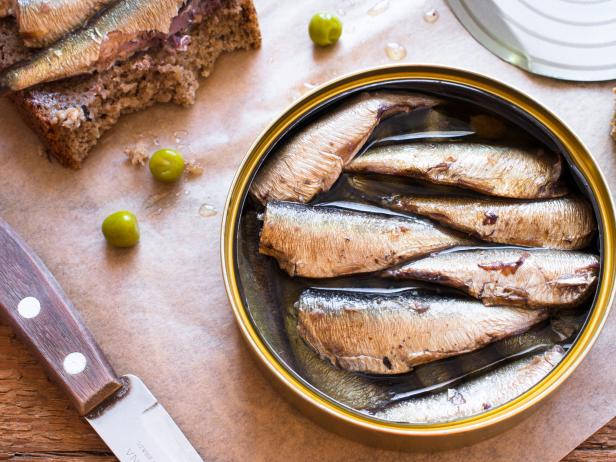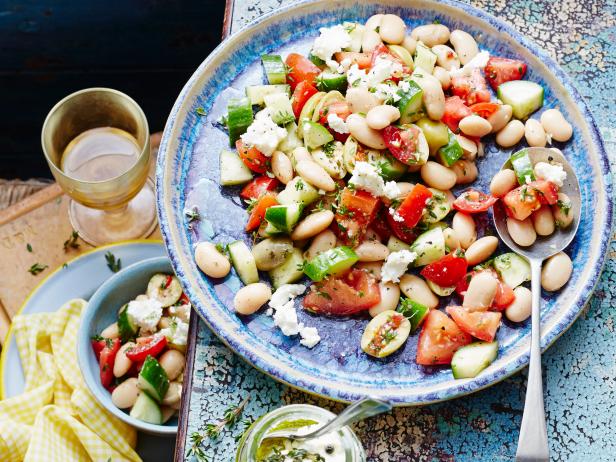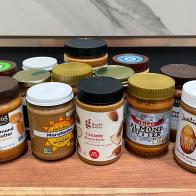What Is the Mediterranean Diet?
A basic overview of the popular eating plan, plus the pros and cons of following it.

OksanaKiian/Getty Images
The Mediterranean Diet has gained popularity over the past several years, with much research to back up its benefits. The 2020-2025 dietary guidelines for Americans identify the Mediterranean dietary pattern as healthy to follow. If you’re looking to follow this eating plan, you’ll find an overview of the diet below along with the pros and cons of following it.
Mediterranean Diet 101
Since much of the Mediterranean regions are surrounded by water, fish is a main source of protein in this diet. Fresh fruits, vegetables and herbs are also a basis of this plan along with whole grains, nuts, seeds, beans, peas and lentils. Olive oil is the healthy fat of choice and a glass of red wine is permitted with meals.
Several research studies have associated this style of eating with extended life expectancy and lowering the risk for heart disease. It has also been associated with decreasing the risk of diabetes and preventing certain forms of cancer. In addition, a new field of research has showed that a higher adherence to the Mediterranean diet is associated with a lower risk of mental disorders, including cognitive decline with age and depression.
Some of the main guidelines of the Mediterranean diet include:
- Use lots of fresh herbs and spices to flavor your meals instead of salt
- Eat fish at least twice a week
- Eat minimal red meat
- Get your omega-3 fats from walnuts, fatty fish and canola oil
- Exercise is a must
- Enjoy your meals with family and friends

Photosiber/Getty Images
Is Following the Mediterranean Diet Expensive?
There has been some pushback that the Mediterranean diet isn’t a diet that can be followed for those living in the U.S. One reason is that fresh produce is recommended year-round, however that is not always a viable option for those living in certain areas of the U.S. Fresh fish can also be pricy.
However, it is possible to use frozen and canned fruits and vegetables instead of fresh. Just look for frozen fruit made with 100-percent fruit and no added sugar, and frozen vegetables without dressings high in saturated fat. Lower sodium and no-added sodium varieties of vegetables are available at grocery stores, as are canned fruit in 100-percent juice, water or extra-light syrup. Tinned fish is also growing in popularity in the U.S., and can be a great alternative to fresh fish. You can also buy single-serving filets of frozen fish.
As with all diets (and especially the popular ones), you’ll find an array of diet books that offer advice, meal plans and recipes to follow. Books vary, based on the author’s or expert’s opinions or even the specific Mediterranean country referenced. While variations may have distinct guidelines and their own special dishes, the basic ideas above carry over to all.

BRETT STEVENS/Getty Images
What Are the Pros of the Mediterranean Diet?
- Many healthy, fresh foods recommended
- Lots of omega-3s
- Wine is allowed
- Benefits backed by scientific evidence
- Moderate exercise recommended
- Encourages time with family and friends
What Are the Cons of the Mediterranean Diet?
- Some versions of the diet are too restrictive and may be unhealthy to follow
- You must make time to cook and pre-plan grocery shopping
- Many of the studies conducted on the Mediterranean diet have been done in Greece and Spain which has a different way of life and access to specific foods. However, swaps with similar foods that are local to areas in the U.S. can make following the plan more accessible and affordable.
The Bottom Line: The Mediterranean Diet primarily calls for healthy, fresh foods. Some of the foods recommended in the diet may not be available in the U.S., but making smart swaps can help you cut down on costs and stick to the plan.
Related Content:






























